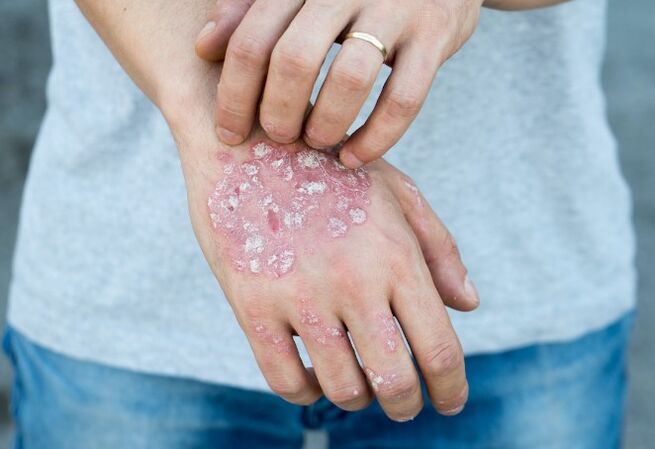Psoriasis, like all other types of chronic diseases of the skin of an inflammatory nature, has its own stages of development.Upon diagnosing the disease, the doctor necessarily takes into account not only the variety of the disease, its form, gravity and cause of occurrence, but also the stage of development.For an experienced specialist, it is not difficult to designate the stages of psoriasis, since they all differ in specific symptoms, which are almost impossible to confuse.Depending on the manifestations of the disease, it is prescribed the appropriate treatment to reduce and relieve external symptoms, and to the elimination of factors that cause the development of the disease.

The beginning of the disease
Although the complete cure methods for psoriasis have not yet been found, since the reasons that cause their occurrence, forms, types and stages of the development of the disease have not been studied quite well.Therefore, in the development and course of the disease, three main stages are distinguished: initial or progressive, stationary and "fading", regressive.
The characteristic processes of the beginning or exacerbation of the course of the disease, that is, the progressive stage is the appearance of neoplasms in the form of an eruption on the surface of the skin.At the same time, the elements of the eruption (point, pointed, lenticular) tend to peripheral growth.Extending in healthy areas of the skin, small eruptions are formed clearly defined oval psoriatic plaques.
In the stage of progression of the disease, the psoriatic plaques are painted in bright pink or red, and a specific peeled bark in the lesions is absent.The thickened edges of the losses of defeat are not covered with whitish scales.
During the progressive stage of psoriasis, the patient experiences itching, a slight ardor sensation in areas of skin lesions, a slight general discomfort.With any contact with clothes and hairstyle, new papular rashes appear.
Additional development
After 1-4 weeks, the second stage of disease development occurs in state.The exacerbation process weakens, the color of the psoriatic plaques becomes less intense, old eruptions are absorbed, the formation of new eruptions stops.

The healing of the papules occurs peripheral, that is, from the center to the edges, which determines the characteristic shape of the plates.In the stationary stage, the surface of the lesions is completely covered with squamous scabs of a characteristic whitish color.
In the regressive stage of psoriasis, in the stage of attenuation of the disease and its transition to the referral period, all the spotlights of the lesion are gradually resolved completely, the color of the plates becomes almost indistinguishable from the color of the color of the healthy skin, the peeling of the epidermis decreases markedly, the ardor and the decrease of the zafadora.Around the spotlights the "Voronov necklace" appears called, a ring of keratinized and dense layers of the skin.Throughout the periphery of all eruptions, the skin is discolored.The disease regression stage under the influence of intense proper treatment can last a long time, sometimes up to several months.Then, psoriasis is completely withdrawn, leaving insignificant localized plaques in the body in the most common places for this disease (elbows, knees, stomach, buttocks).
In the task of a person suffering from psoriasis, to constantly maintain the disease in the remission stage.Control over all aspects of life and disease prevention will require the strictest: this is not a secret.But this is the only way to achieve positive treatment results, fix them and continue the normal existence in society.























